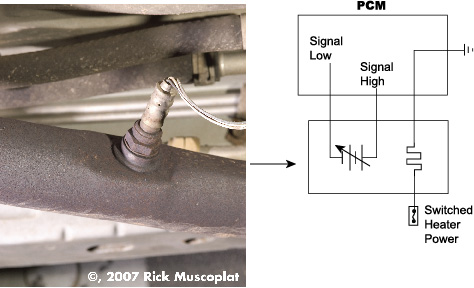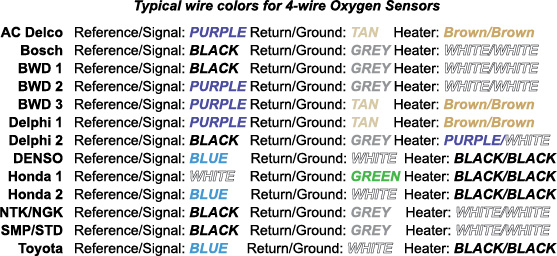P0134 Oxygen sensor
Fix code P0134 Oxygen sensor
A P0134 trouble code is defined as Oxygen Sensor Circuit No Activity Detected (Bank 1 Sensor 1). This oxygen sensor is located on the engine bank that houses #1 cylinder and is located BEFORE the catalytic converter
In older Zirconia oxygen sensors, the PCM expects to see a rapidly changing voltage varying from .1-volts to .95-volts. A Zirconia sensor generates its own voltage based on the difference in oxygen levels between what it see in the atmosphere and the exhaust stream. If the PCM detects no switching activity, it will set a trouble code P0134.
Newer style Wideband sensors operate differently. But it’s hard to give a single description for the different types of widebands. There’s Planar, Titania, and Air/Fuel ration sensor. Each car maker uses a different style and the way the operate is slightly different.
For example a Titania oxygen sensor is a variable resistor style. The PCM sends a reference voltage to the sensor and as the oxygen content in the exhaust changes, the resistance of the oxygen sensor changes, too. Depending on the condition (rich or lean), the resistance causes the sensor reference voltage to rise or fall. A lean condition will cause a Titania oxygen sensor to output a high voltage signal. That’s just the opposite of the Zirconia style sensors. The return voltage range is typically 0 to 5 volts.the general
Wideband Planar and Air/Fuel
These sensors can be Wideband, Planar, UEGO or Air/Fuel ratio sensors. They provide a much more accurate measure of how much Oxygen is in the exhaust stream. Instead of the Zirconia style rapid switch between rich and lean, these sensors provide a slowly moving voltage. The term ‘planar’ comes from the shape of the sensing element which is a flat strip (plane), rather than the thimble shape of traditional Zirconia oxygen sensors.
These newer sensors works on roughly the same principle as an ordinary sensor but with an internal oxygen pump. The output current varies in proportion to the Oxygen present in the exhaust. But instead of just a rich/lean signal, the varying voltage provides a far wider range than a traditional sensor, giving the PCM far more precise data.
Each sensor manufacturer designs their sensors a bit differently. But, in general, the PCM sends a 3.3-v or 2.6-v reference voltage to the sensor and looks for a modified return voltage. If the PCM detects no voltage movement on this sensor, it’ll set a P0134.
Most common causes are: dead sensor, break in wire between PCM and sensor.
To learn more about Zirconia style oxygen sensors, click here
To learn more about the newer air/fuel and wideband sensors, click here
To learn how to replace an oxygen sensor, click here
© 2012 Rick Muscoplat
Posted on by Rick Muscoplat

